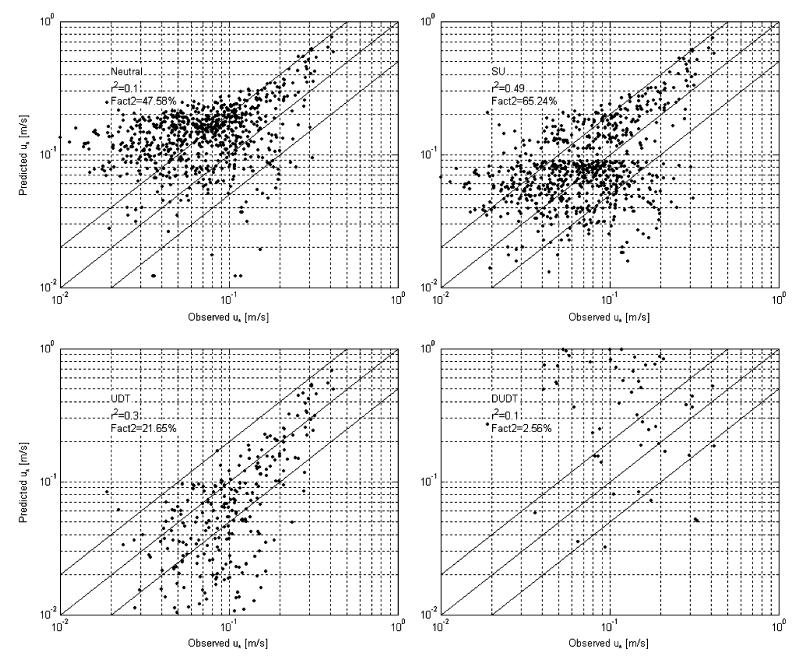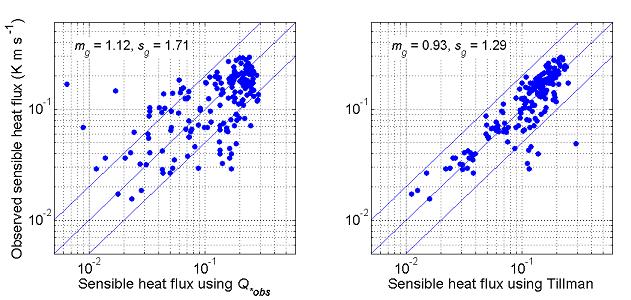Description
Micrometeorological variables, such as friction velocity, heat flux, and turbulent velocities are required as inputs to dispersion models. We make relatively simple measurements of mean winds and temperatures on a tower at one or preferably more
levels and derive these parameters using Monin-Obukhov similarity theory (MOST).
ĪĪ
Field Study
VTMX 2000 (Monti et al., 2002)
Wilmington, CA 2005
Riverside, CA 2007
ĪĪ
ResultsĪĪ
Using two levels of wind speed led to poor results
presumably because unavoidable uncertainties in
measuring the differences in velocities were
comparable to differences predicted by similarity

|
Surface heat flux and friction velocity from the Wilmington 2005 study during convective conditions
are adequately
estimated based on temperature fluctuation measurements using free convection

During stable conditions, using temperature fluctuations
does not improve
the results over those based on
a nominal value of temperature scale

|
Shear effects need to be accounted for to estimate heat flux from Riverside, CA 2007 study

ĪĪ
Using measurements of temperature fluctuations performs better in
estimating heat flux than that based on the surface energy balance

|
ĪĪ
Publications
Princevac M, Venkatram A (2007) Estimating micrometeorological inputs for modeling dispersion in urban areas during stable conditions, Atmos. Environ. 41, 5345©C5356.
Qian, W., M., Princevac, and A., Venkatram, 2009, Relationships between Urban and Suburban Micrometeorological Variables, AMS Eighth Conference on the Urban Environment, Phoenix, AZ.
Qian, W., M., Princevac, and A., Venkatram, 2010: Using Measurements in Suburban and Urban Areas to Estimate Meteorology for Modeling Dispersion during Convective Conditions, accepted by Boundary-Layer Meteorology.
Qian, W., and A., Venkatram, 2008: Estimating Meteorological Inputs for Urban Dispersion Models, 12th International Conference on Harmonisation within Atmospheric Dispersion Modelling for Regulatory Purposes, Cavtat, Croatia.
Venkatram A, Princevac M (2008) Using measurements in urban areas to estimate turbulent velocities for modeling dispersion, Atmos. Environ. 42, 3833©C3841.
Venkatram, A., and W., Qian, 2009, Regulatory Modelling: Current and Future Issues, Air Quality and Climate Change (formerly Clean Air and Environmental Quality), ISSN 1836-5876, volume 43 No. 4, p17-23.
|

